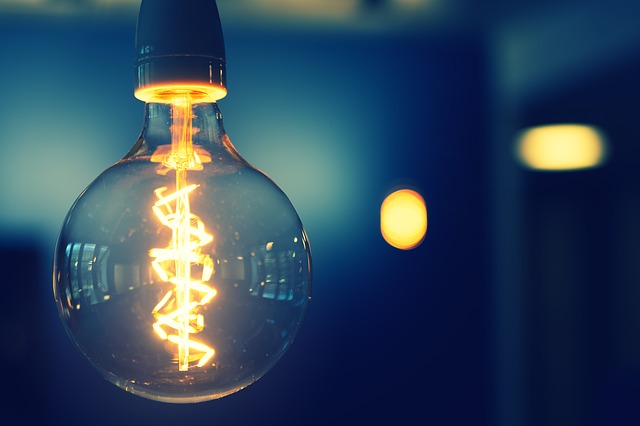How do you calculate lumens to watts?
When it comes to lighting these days, it's not as simple as heading to the shop and picking up a new globe. There are so many options available, with different brands and types and strengths making things a little trickier to manoeuvre than they used to be.

With this in mind, we thought we'd do some of the hard stuff for you - calculations. We have collated a guide as to how to calculate lumens to watts and lux to lumens, as well as some comparisons between the lighting types, so you can confidently choose your next light globe with ease.
If you have any further questions, give All Purpose Trade Solutions a call on 1300 370 455 and we will be happy to assist.
Definitions of lighting terms
To start, we will take a look at some definitions of major lighting terms - lumens, watts and lux. This will make the calculations a little easier to understand (hopefully).
What is a lumen?
Firstly, there are lumens. Lumens are a measurement of how much light is being produced by a light source, and are termed 'lm'. The light that is being created must be visible to the naked eye, with lumens generally being utilised to calculate how bright a light is. In other words, lumens = brightness.
What are watts?
Next up is watts. You've likely heard of watts before, with the 'W' that is located on a majority of lighting packaging. In general, people believe that watts = brightness, which isn't actually 100% correct. Watts are actually a measurement of how much energy a light uses, so is more related to energy consumption. The reason for the misunderstanding is easy to explain though - in the past, a lot of incandescent light bulbs emitted the same amount of light as watts, even though they were produced by different companies. This, therefore, resulted in people relating watts with brightness but, with the introduction of more energy-efficient lighting options, this is no longer the case. Lights do not need high wattage to attain higher brightness levels, resulting in numbers not being the same as before.
To give an example, a 42W halogen bulb has the same brightness, or lumens, as an LED that uses 10 watts. This, therefore, means the LED light uses less energy to achieve the same brightness level as the halogen, making it more cost-effective and energy efficient.
What is lux?
Finally, there is lux. Lux is the measurement of light intensity, otherwise referred to as 'illumination' or 'illuminance'. In other words, lux is the amount of light that is emitted out into a designated area by a light source.

Calculating lumens to watts
Now we get to the fun part... calculations. It is important to understand that lumens do not 'equal' watts, however, there is lighting packaging out there that may have the term 'equivalent watts' written on it. This is usually referring to the actual relationship that watts and lumens have, as opposed to them equalling one another.
Here are a few other examples to help you out a little more:
- 1125lm = 75W incandescent light bulb watts = 18.75W fluorescent/LED watts.
- 1500lm = 100W incandescent light bulb watts = 25W fluorescent/LED watts.
- 1250lm = 150W incandescent light bulb watts = 37.5W fluorescent/LED watts.
- LEDs emit around 80 lumens per watt (lm/W), compared to 14 lm/W created by a similar halogen. The higher the lm/W, the more energy efficient a bulb is.
- A 60W incandescent bulb emits 800lm, which is the same as a 42W halogen, a 13W CFL or a 10W LED.
Calculating lux to lumens
There is also lux to lumens, which is calculating illumination to brightness. In simple terms, 1 lux = 1 lumen/m² which relates to the amount and brightness of light being emitted in a designated area. If you are a little confused that is understandable, so let's take a look at an example.
If you have an area of 1m² with a measurement of 1,000 lumens, there is an illumination level of 1,000 lux. If you make that area bigger, to say 10m², but still have a measurement of 1,000 lumens, the illumination level in that area will be 100 lux.
If you need a little more assistance with how to figure out the lighting arrangements that are best going to suit your home or office, speak to a lighting professional and they will be able to assist with brightness, illumination and wattage.
Comparing lumens, lux and watts
Now that you know a little more about the calculations when it comes to lux, lumens and watts, it's time to take an overall look at each and how they compare. To get the best picture, take a look at the below table.

250 output (lumens) =
- 25 watts - traditional incandescent bulb
- 18 watts - Halogen (mains voltage)
- 4-6 watts - CFL
- 3-4 watts - LED

500 output (lumens) =
- 40 watts - traditional incandescent bulb
- 28 watts - Halogen (mains voltage)
- 7-9 watts - CFL
- 5-8 watts - LED

800 output (lumens) =
- 60 watts - traditional incandescent bulb
- 42 watts - Halogen (mains voltage)
- 11-14 watts - CFL
- 8-12 watts - LED

1100 output (lumens) =
- 75 watts - traditional incandescent bulb
- 52 watts - Halogen (mains voltage)
- 14-17 watts - CFL
- 11-17 watts - LED

1500 output (lumens) =
- 100 watts - traditional incandescent bulb
- 70 watts - Halogen (mains voltage)
- 19-23 watts - CFL
- 15-23 watts - LED
This table is courtesy of Energy Rating. This table is a general guide only, as bulbs can differ depending on the manufacturer.
Your local experts in lighting
If you have any further questions regarding lumens, lighting or other lighting solutions, give All Purpose Trade Solutions a call on 1300 370 455 today. We are specialists in the most cost-effective and quality lighting solutions.
Resources:
Wikipedia (Lumens): https://en.wikipedia.org/wiki/Lumen_(unit)
Energy Rating (Lumens to Watts): https://www.energyrating.gov.au/lighting/lumens-watts
Contact us today.
We offer obligation-free quotes, and guarantee all of our workmanship 100%. For more information about our services, please contact our team today.
